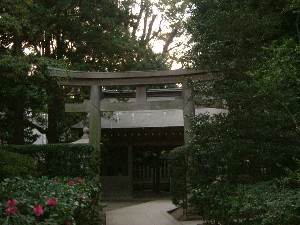Introduction
 We Japanese visit shrines and pray to kami every year. A lot of people visit shrines. They pray during New Year's visits to shrines, during the Seven-Five-Three year-old Festival for small children, and they also pray for safe birth of babies, or family safety, and success in business and traffic safety.
We Japanese visit shrines and pray to kami every year. A lot of people visit shrines. They pray during New Year's visits to shrines, during the Seven-Five-Three year-old Festival for small children, and they also pray for safe birth of babies, or family safety, and success in business and traffic safety.
Shrines were places set up by Japanese ancestors to meet the Shinto gods, and they invited the gods and worshiped them there. At important stages of our lives, and when starting something new, we are sure to visit shrines and ask for the god’s instructions. And we pray to the god for success and hope for the help of the god. A shrine visit has a certain style of worship. Let's see how to visit a shrine. And think about the meaning of that.
 前へ
前へ
 My Shinto: Personal Thoughts on Shinto and Japanese Culture
My Shinto: Personal Thoughts on Shinto and Japanese Culture